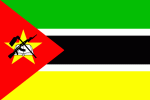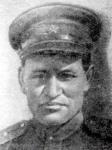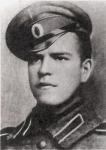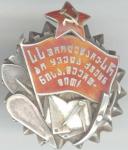-
Posts
564 -
Joined
-
Last visited
Content Type
Profiles
Forums
Blogs
Gallery
Events
Store
Everything posted by Harvey
-

Soviet THE SOVIET QUIZ - 2011 - QUIZ CLOSED
Harvey replied to JimZ's topic in USSR: Soviet: Other Militaria
Yes Jim, I'm afraid the point will have to go to Gunner. You were so very close! Here's what I had in mind re. the vodka: And I hadn't even thought of the Hezbollah flag, but was thinking of the one for Mozambique: -

Soviet THE SOVIET QUIZ - 2011 - QUIZ CLOSED
Harvey replied to JimZ's topic in USSR: Soviet: Other Militaria
Well, you're definitely on the right track, and have listed the products. But to be specific it's a WHO, not a WHAT. -

Soviet THE SOVIET QUIZ - 2011 - QUIZ CLOSED
Harvey replied to JimZ's topic in USSR: Soviet: Other Militaria
Question #17: My products are known throughout the world. They have helped shape the modern world over the last half century. They are used everywhere, from flags to vodka. To many, I am a household name. Who am I? -

Soviet THE SOVIET QUIZ - 2011 - QUIZ CLOSED
Harvey replied to JimZ's topic in USSR: Soviet: Other Militaria
#14 gave me the hardest time, because I couldn't find any good pictures of him, although there were several other Marshals who looked somewhat similar (Chistiakov, Bogdanov, Yakubovsky, Malinovsky, etc.). I finally found one of him and another officer looking at a map and decided it was good enough to go with. The only ones I recognized right away were Koniev, Vasilevsky & Budennyi (who could forget that mustache!) - all the others I had to search out one by one. -

Soviet THE SOVIET QUIZ - 2011 - QUIZ CLOSED
Harvey replied to JimZ's topic in USSR: Soviet: Other Militaria
Ok, here's my foray into the latest quest: 1. Marshal of Soviet Union Kirill MERETSOV 2. Marshal of Soviet Union Leonid GOVOROV 3. Marshal of Soviet Union Ivan BAGRAMAYAN 4. General Ivan CHERNYAKOVSKY 5. Marshal of Soviet Union Ivan KONIEV 6. Chief Marshal of Tank Troops Pavel ROTMISTROV 7. Chief Marshal of Artillery Nikolai VORONOV 8. Chief Marshal of Aviation Alexander NOVIKOV 9. Marshal of Soviet Union Alexander VASILEVSKY 10. Marshal of Soviet Union Boris SHAPOSHNIKOV 11. Marshal of Tank Troops Yakov FEDERENKO 12. Chief Marshal of Aviation Alexander GOLOVANOV 13. Marshal of Artillery Nikolai YAKOVLEV 14. Marshal of Engineering Troops Mikhail VOROBIEV 15. Marshal of Soviet Union Semyon BUDENNYI 16. Marshal of Soviet Union Semyon TIMOSHENKO -

Soviet THE SOVIET QUIZ - 2011 - QUIZ CLOSED
Harvey replied to JimZ's topic in USSR: Soviet: Other Militaria
I'm a fusion of milleniums old tradition and modern times. They called me "pride" and "beauty", but nobody really knows where my name comes from. They never gave me a medal, but they errected me a monument. I starred in film and cartoon movies, and there are many songs about me. I was retired in 1950's, but my younger bigger cousins are still on duty. What's my name? Where is my monument? Calvary is an old tradition that has been replaced in modern times by the use of tanks - armored cavalry. Many Soviet tank crews painted slogans on their tanks, so it's conceivable that one could have "pride" or "beauty" in their names. There are many war memorials and monuments that feature tanks in them. I don't know about songs and cartoons, but tanks have been used in many movies. "Younger, bigger cousins" refers to newer, larger tanks. You are a T-34 medium tank, and you have monuments in Hrodno, Belarus, Kaliningrad & Simferopol. -

Soviet THE SOVIET QUIZ - 2011 - QUIZ CLOSED
Harvey replied to JimZ's topic in USSR: Soviet: Other Militaria
And I'm going to pass on thinking up the next question - any takers? -

Soviet THE SOVIET QUIZ - 2011 - QUIZ CLOSED
Harvey replied to JimZ's topic in USSR: Soviet: Other Militaria
Ha! I found it! Yekaterina Ivanovna Zelenko (September 14, 1916—September 12, 1941) was a Soviet (ethnic Ukrainian) war pilot. She is the only woman ever to have performed an air ramming. Zelenko attended seven school classes in Kursk. With her mother's move to Voronezh, Yekaterina entered the Voronezh Secondary Flying School. In October 1933 she passed through Voronezh Flying Club and was sent to the 3rd Orenburg Military Flying Academy named after Kliment Voroshilov. Later she found herself in Kharkov, assigned to the 19th Light Bomber Brigade. In the Winter War Zelenko was the only female pilot. On the eve of Operation Barbarossa, Zelenko was taking part in the retraining of the leading personnel of seven flying regiments in use of the Sukhoi Su-2. Following the German invasion, Zelenko made forty flights (also at night) and participated in twelve air combats with enemy fighters. On September 12, 1941, Zelenko's Su-2 was attacked by seven Messerschmidt Me-109s. After Zelenko ran out of ammunition, she launched a top-down air ramming which tore an Me-109 in two as the propeller hit the German aircraft's tail. The Su-2 she was piloting exploded though, and Zelenko was pulled out of cockpit. The air combat was observed by local residents who identified her body. On May 5, 1990 Zelenko was awarded the title of the Hero of the Soviet Union posthumously. A minor planet, 1900 Katyusha, was named after her. Zelenko's husband Pavel Ignatenko also died in air combat in 1943. A few more pictures: -

Soviet THE SOVIET QUIZ - 2011 - QUIZ CLOSED
Harvey replied to JimZ's topic in USSR: Soviet: Other Militaria
Well, I was going to suggest Senior Lieutenant I.I. Ivanov, who on 22 June 1941 became the first Soviet pilot to ram another aircraft - introducing the concept of "taran." Or possibly Captain Boris Kovzan, who successfully rammed 4 aircraft in less than a year - and lived to tell about it! So if it's not aerial ramming or ground ramming, it must be something else... -

Soviet THE SOVIET QUIZ - 2011 - QUIZ CLOSED
Harvey replied to JimZ's topic in USSR: Soviet: Other Militaria
Yeah, I saw your question a few hours after you posted it (it's still early here in California) and immediately guessed it to be the Marshals, due to the low number (4) and the fact that several of them had been executed by Stalin, while others had enormously successful careers (Zhukov, etc.). I was in the process of gathering the info on Akhromeyev when Dan beat me to the punch! -

Soviet THE SOVIET QUIZ - 2011 - QUIZ CLOSED
Harvey replied to JimZ's topic in USSR: Soviet: Other Militaria
Dang it, Dan - now look who got beaten just by a matter of minutes! For the record, the four who are alive today are Viktor Kulikov, Sergei Sokolov, Vasily Petrov, and Dmitri Yazov. -

Soviet THE SOVIET QUIZ - 2011 - QUIZ CLOSED
Harvey replied to JimZ's topic in USSR: Soviet: Other Militaria
Ok Windu, it's your turn again - but this time no obscure Wikipedia biographies! :shame: -

Soviet THE SOVIET QUIZ - 2011 - QUIZ CLOSED
Harvey replied to JimZ's topic in USSR: Soviet: Other Militaria
Good job, Windu - your point. Here's the other picture I had ready to post in case y'all needed a hint: -

Soviet THE SOVIET QUIZ - 2011 - QUIZ CLOSED
Harvey replied to JimZ's topic in USSR: Soviet: Other Militaria
Ok, to keep this thread moving, here's my next question: Who is this well-known Soviet soldier? What was he famous for? -

Soviet THE SOVIET QUIZ - 2011 - QUIZ CLOSED
Harvey replied to JimZ's topic in USSR: Soviet: Other Militaria
In case you're wondering how I found all this, I came across a website (http://www.warheroes...main.asp/page/1) that lists all awardees of the Hero of the Soviet Union - starting with those with the most awards and continuing down to the single awardees. It conveniently lists the dates of birth/death, so it was relatively simple to cross-check those double awardees who were born before the turn of the 20th century and died in the 1980s. Although the biographical data is in Russian, Google converts it to English, but I still had to re-write most of it so that it made some sort of sense. For the record, here's the picture that Windu posted in its entirety: -

Soviet THE SOVIET QUIZ - 2011 - QUIZ CLOSED
Harvey replied to JimZ's topic in USSR: Soviet: Other Militaria
Gentlemen, the answer has been found! The picture is of Pavel Ivanovich Batov (June 1, 1897 – April 1985). The commander of 65th Army, General Batov was born June 1, 1897 in the village of Filisovo in the Rybinsk district of the Yaroslavl region. A poor man from a peasant family, he graduated from the two-class rural primary school and at age 13 traveled to St. Petersburg where he worked as a loader and a peddler. In November 1915 he was drafted into the Russian Imperial Army and served in the 3rd Guards Rifle Regiment. Wounded in WWI and awarded the cross of St. George for valor. Served as a machine-gun platoon commander, assistant director at the Rybinsk recruiting office, and as assistant director of the military Reserve officers and officers of the Moscow Military District during the Russian Civil War in 1918. He participated in the suppression of counter-revolutionary actions and rebellions in Rybinsk, Yaroslavl, and Poshekhonye. In 1919, he was assistant commander and then commander of a rifle company. He graduated from the Red Army's infantry tactical commanders advanced course in 1927 and two years later joined the Communist Party. In 1934, he served as commander of a rifle regiment in the 3rd Moscow Proletarian Infantry Division of the Moscow Military District. From December 1936 - August 1937 under the pseudonym "Pablo Fritz" he participated in a Spanish Civil War as a military adviser to the 12th International Brigade, and an adviser to the commander Teruelskim front. Upon his return in August 1937 he was assigned as commander of the 10th Rifle Corps, then a year later reassigned as commander of the 3rd Infantry Corps. From 1939-1940 he participated in the Russo-Finnish War, commanding a rifle corps of the 13th Army on the Karelian Isthmus. From April to November 1940 he served as Deputy Commander of the Transcaucasus Military District, then commanded the 9th Special Rifle Corps in the Crimea, and June 20, 1941 at the same time was appointed commander of ground forces in the Crimea. Promoted to Lieutenant-General on 04/06/1940. At the beginning of World War II, Batov was commander of the 9th Special Rifle Corps in the Crimea in August 1941, then served as Deputy Commander of the 51st Army of the Southern Front, directing the defensive battles at Perekop and around Kerch. From November - December 1941, he commanded the 51st Army Transcaucasian Front (located on the reorganization on the Taman peninsula). From January - February 1942 he was the Commander of the 3rd Army, Bryansk Front, before being promoted to serve as assistant commander of the Bryansk Front from February to October 1942. From 14 to 23 October 1942 - commander of the 4th Panzer Army, which was later renamed the 65th Army. While serving as commander of 65th Army, Batov fought to the end of the war as part of the Don, Stalingrad, Central, Belorussian , 1st and 2nd Belorussian Fronts. The troops under the command of Batov in the Stalingrad battle heroically defended Stalingrad north of the Don, and participated in the destruction of the German 6th Army at Stalingrad. From February - March 1943, his Army was heavily engaged in offensive and defensive battles in the area of Sevsk. In the battle of Kursk his Army was active in the defensive operations of the Central Front. In the battle of the Dnieper River in August - September 1943, the 65th Army fought its way swiftly up to 300 miles, crossing the Desna, Sog, and Dnieper Rivers, liberated Sevsk, and fought heroically on the Dnieper bridgeheads. For his personal bravery and courage in the defense of the Dnieper bridgehead, the Presidium of the Supreme Soviet on October 30, 1943 awarded Lieutenant-General Pavel Ivanovich Batov the title Hero of the Soviet Union (№ 56) and the Order of Lenin. In the winter campaign of 1943 - 1944 Batov's troops again distinguished themselves in the Gomel-Rechitsa and Kalinkovichi-Mozyr Offensive operations. Batov used skillfully combined infantry and tank attacks in the 1944 Bobruisk operation which played a decisive role in destroying enemy forces at Bobruskoy. He later distinguished himself by defeating the enemy forces north of Brest, crossed the river Bug, and captured and held a strategic bridgehead in the region of Serock. In the East-Prussian operation, the 65th Army distinguished itself in the defeat of the 2nd and 4th German Armies, reduced several fortified areas, and then successfully attacked through East Pomerania, crossing the Oder and occupying large areas of northern Germany. He was promoted to Colonel-General on June 29, 1944. On June 2, 1945, Colonel-General Batov was awarded a second "Gold Star" (№ 1726) by the Presidium of the Supreme Soviet for his initiative and courage in organizing the crossing of the Oder River and the subsequent capture of the city of Stettin. The military successes of the 65th Army under Batov's command were recorded 23 times in the orders of the Supreme Commander. In the course of numerous combat operations, Batov proved to be decisive, energetic commander. After the war he commanded the 7th Mechanized Army and in October 1946 he took command of the 7th Separate Armored Division. In March 1950 he served as commander of the 11th Guards Army, then in June 1954 was the first Deputy Commander of Soviet Forces in Germany. In March 10, 1955 Batov was promoted to "General of the Army," and in the same month he was appointed commander of the Carpathian Military District. From April 1958 to November 1959 he commanded the Baltic Military District and was then assigned as senior military adviser to the People's Liberation Army of China. In January 1961, Batov was assigned the honorary post of inspector-adviser of the Group of Inspectors General of the Ministry of Defence, but soon returned to military duty and in August 1961 he was appointed commander of the Southern Group of Soviet Forces in Hungary. On September 1962 he was appointed First Deputy Chief of General Staff of the Armed Forces of the USSR and in October 1965 he again served in the Group of Inspectors General of the Ministry of Defence. From 1970 - 1981 he served as the chairman of the Soviet War Veterans Committee. He also served as a member of the Supreme Soviet of the USSR from 1938-1950, and again from 1954-1966. He died April 19, 1985 in Moscow and was buried in the Novodevichy cemetery. In addition to his two awards of Hero of the Soviet Union, he was awarded eight Orders of Lenin (dated 04/07/1937, 3/11/1940, 10/30/1943, 02/21/1945, 31/05/1957, 05/31/1967, 05/31/1977, and 5/31/1982), the Order of the October Revolution (№ 1730 dated 31/05/1972), three Orders of the Red Banner (dated 01/03/1937, 03/11/1944, and 20/06/1949) , three Orders of Suvorov 1st Class (№ 10 dated 28/01/1943, № 49 dated 16/09/1943, and № 299 dated 10/04/1945), the Order of Kutuzov 1st Class (№ 266 dated 23/07/1944 city), the Order of Bogdan Khmelnitsky 1st Class (№ 309 dated 18/02/1956), the Order of the Great Patriotic War 1st Class (06/04/1985), the Order for Service to the Motherland in the Armed Forces 3rd Class (30/04/1975), and the Order of Honor (№ 2624 from 14.05.1936). Among his foreign orders: Commander's Cross of the Order of the British Empire (UK), Virtuti Militari (Poland), Order of Grunwald Cross 2nd Class (Poland), Order of Polonia Restituta (Poland), two orders of the People's Republic of Bulgaria, the Order of Tudor Vladimirescu (Romania), Order of Red Banner (Hungary), the Order of Sukhbaatar (Mongolia), Order of the Red Banner (Mongolia), Order "For Merit" in gold (the German Democratic Republic). -

Soviet THE SOVIET QUIZ - 2011 - QUIZ CLOSED
Harvey replied to JimZ's topic in USSR: Soviet: Other Militaria
-

Soviet THE SOVIET QUIZ - 2011 - QUIZ CLOSED
Harvey replied to JimZ's topic in USSR: Soviet: Other Militaria
...easy to say when you know the answer... -

Soviet THE SOVIET QUIZ - 2011 - QUIZ CLOSED
Harvey replied to JimZ's topic in USSR: Soviet: Other Militaria
Looks like Stanislav Gilyarovich Poplavsky - he was Rokossovsky's deputy when Rokossovsky was Marshal of Poland. Poplavsky was born on 22 April 1902. -

Soviet THE SOVIET QUIZ - 2011 - QUIZ CLOSED
Harvey replied to JimZ's topic in USSR: Soviet: Other Militaria
I know what you mean - I've been playing Mervyn Mitton's "QUICK TEASER" quiz in The Lounge, and I now know nearly every British medal by heart, as well as increasing my knowledge of truncheons, Georgian & Victorian silverware, and various other objects of militaria that I never would've thought about! -

Soviet THE SOVIET QUIZ - 2011 - QUIZ CLOSED
Harvey replied to JimZ's topic in USSR: Soviet: Other Militaria
Very good, Jim! Your point. I first came across this when I spent 5 months in the Republic of Georgia training their troops for duty in Iraq. If memory serves, one of these rare specimens was in a museum we visited in Tbilisi, though at the time I had no idea what badge it was. -

Soviet THE SOVIET QUIZ - 2011 - QUIZ CLOSED
Harvey replied to JimZ's topic in USSR: Soviet: Other Militaria
-

Soviet THE SOVIET QUIZ - 2011 - QUIZ CLOSED
Harvey replied to JimZ's topic in USSR: Soviet: Other Militaria
Sorry for the delay - I will be posting the next question this afternoon (California time). -

Soviet THE SOVIET QUIZ - 2011 - QUIZ CLOSED
Harvey replied to JimZ's topic in USSR: Soviet: Other Militaria
Windu - you got the ribbon right, but forgot the rest of the question... #8 Order of Victory The ribbons of various Soviet orders have been combined to create the Order's ribbon. The following featured orders are depicted on the ribbon (read from outside towards the center): Order of Glory (Орден Славы). Orange with black center stripe.Order of Bogdan Khmelnitsky (Орден Богдана Хмельницкого). Light blue stripe.Order of Alexander Nevsky (Орден Александра Невского). Dark red stripe.Order of Kutuzov (Орден Кутузова). Dark blue stripe.Order of Suvorov (Орден Суворова). Green stripe.Order of Lenin (Орден Ленина). Large Red stripe (center section). -

Paraguay Order of Merit
Harvey replied to kapten_windu's topic in Rest of the World: Militaria & History
Here's another example that was posted on the OMSA forum, with yet another example of the lion's head.














